One of the issues with growing tomatoes, that becomes obvious around this time of the season, is … how to spread out the tomato harvest, rather than having a glut of tomatoes all at one time.
Or in other words, how to extend the season so that we can be eating tomatoes over a longer period of the summer.
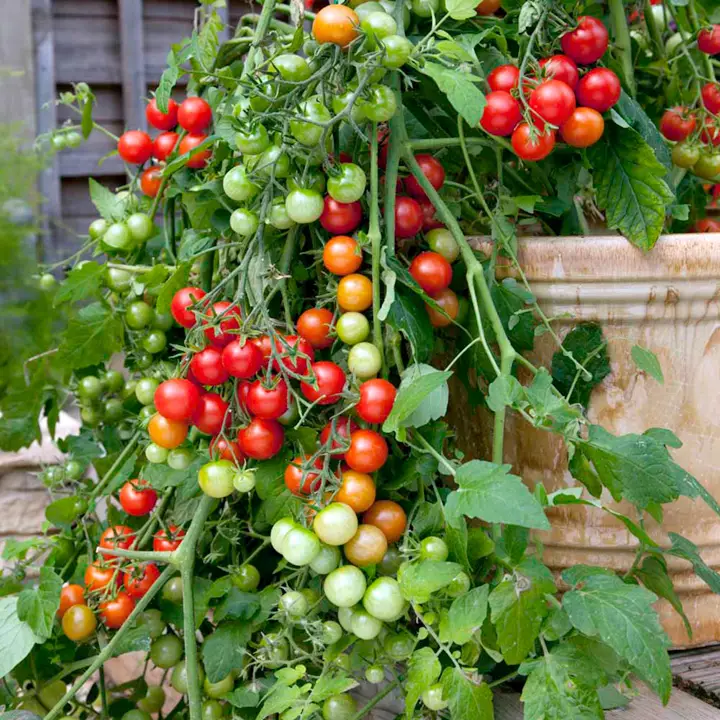
Lizzano – blight free and crops over a longer period 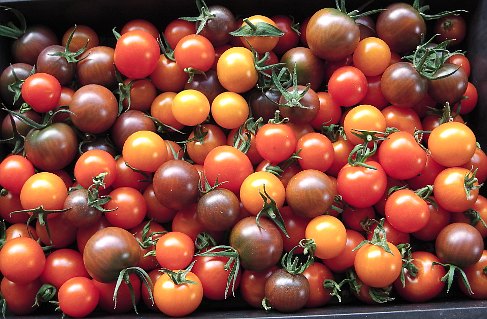
A colourful selection of cherry tomatoes! 
Another tray of tomatoes!
This is especially relevant to bush/cherry varieties that tend to ripen within a shorter period than tall varieties.
The obvious way is to have a greenhouse so that we can sow and plant earlier and still be picking tomatoes into late September – early October. However, some bush varieties tend to grow better outdoors – surprisingly!
Of course bush varieties also tend to have a shorter fruiting period, where we get a lot of tomatoes that ripen quickly and if we can’t use them fast enough – we have to throw some away.
To extend the season with bush/cherry varieties we could do three sowings. For example…
- Red Alert (very early) at the beginning of March
- Tumbling Tom half way through March
- Lizzano at the end of March or beginning of April
Red Alert is extremely early and should keep us going until the Tumbling Toms mature.
Lizzano fruits over a longer period than most bush/cherry varieties, so would keep us in tomatoes until the end of the season, if sown a little later. Lizzano is also blight resistant – just in case we get a wet summer!
Cold tolerant plants – early to mature
Have you ever sown early maturing bush varieties a bit later in the season and have been disappointed with the results? I know I have!
One of the issues with early maturing varieties is that they usually prefer cooler conditions – so are best sown first when conditions are cooler.
This means that if we sow Red Alert a little later, with a variety such as Tumbling Tom, we are likely to have both varieties fruit at the same time, even though Red Alert is normally quicker to mature than Tumbling Tom.
The reason is that each variety performs best when grown in the growing conditions it prefers. Knowing the peculiarities of each variety will help us get the best from each plant and be able to produce mature tomatoes over a longer period – rather than like buses, they all arrive at the same time!
Larger bush varieties
There isn’t a lot of choice when it comes to larger fruiting bush varieties. However, if you prefer something bigger, go for Oregon Spring or Early Girl next season. I’ve grown them both outdoors in the UK but the seeds may be hard to find.
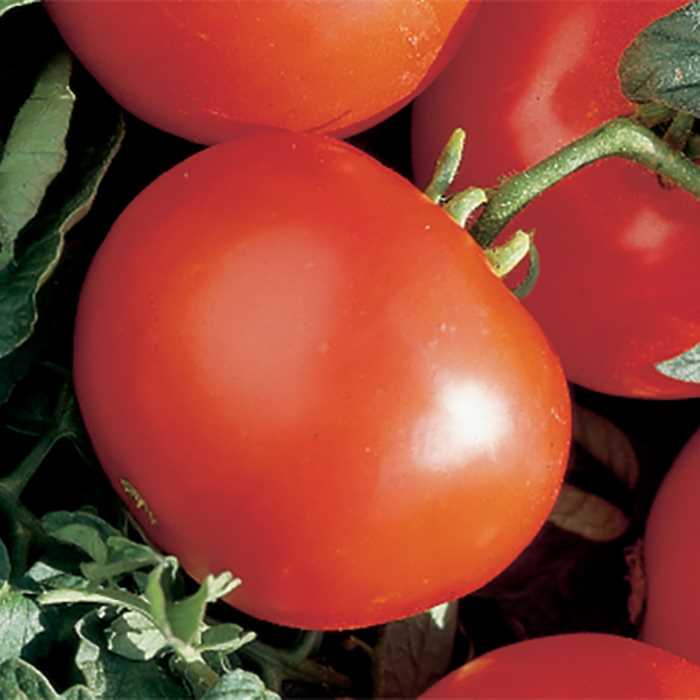
Oregon Spring – Large Bush Tomato 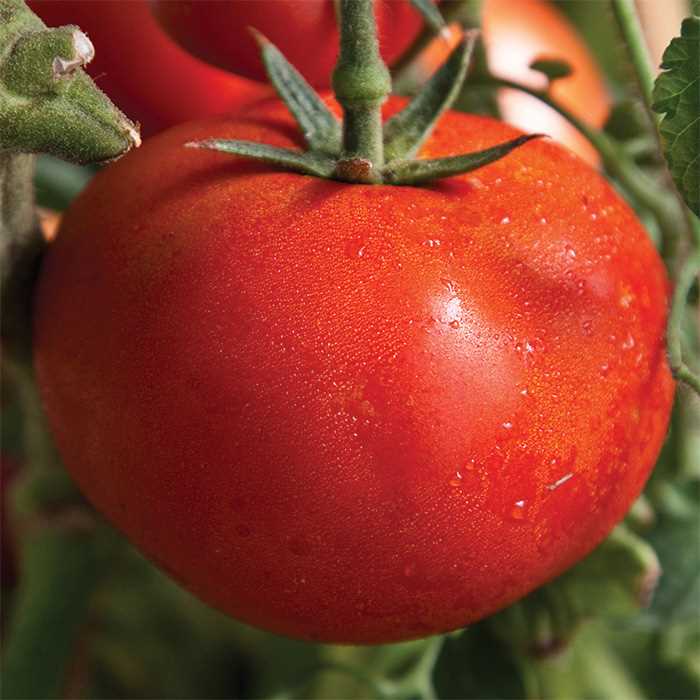
Early Girl – Large Bush Tomato 
Nick with Oregon Spring about 20 years ago!
Tips On Saving Tomato Seeds
Saving Seeds & Open Pollinated Varieties
When you see just how many seeds there are in a tomato it almost seems a waste not to use some of them for sowing next season.
Saving your own seed is a great idea and here are a few tips for success.
Save seeds from open pollinated varieties because F1 hybrid seed will not grow true to type – like the parent plant. Also, use a ripe tomato as the seeds will be fully developed.
Scoop them into a small glass jar with a drop of water and cover with tissue paper held down by a rubber band. Keep at room temperature and the seeds will ferment in the jar after about a week.
Each seed is coated with jelly to stop it from germinating and it is this process (fermentation) that will remove this coating and sterilize the seeds at the same time.
After a week there will probably be a layer of mold on the top which is best removed before pouring the whole mixture into a sieve.
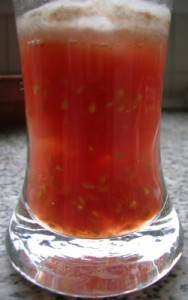
next season.
Run under the tap to remove the jelly coating for a few minutes to clean the seeds then spread them out on an absorbent surface. Coffee filter paper is good but tissue is poor because it sticks to the seeds.
Dry out for several days in a warm aerated place until they are thoroughly dry.
Remember to label them and I like to keep them in a small plastic container such as an empty vitamin or pill container.
If you want to divide them up into small quantities for selling or giving to other gardeners, small glassine envelopes normally used for stamps are excellent.
Keep them in a cool place, until next season.
It is possible to save seeds from F1 hybrids but the problem is – they don’t grow “true to type” in other words, they won’t produce the same shape, colour, taste etc. of tomato, when their seeds are sown.
That’s it for another week!
Regards,
Nick

Ke Holmes
Hi Nick
I tried the summer last this season and I’m very pleased with the results. Mine have been grown in the greenhouse, so I’m not sure how they would perform outdoors.
Hope this will help our fellow members
Rachel Fraser
Thanks for another informative newsletter Nick. I have had great success over the last few years with saved seeds from my tomatoes. It’s well worth the little effort it takes and the fermentation process you describe works a treat – even if dealing with the mold is a little icky!! I have a jar on the go just now from one of my Sakura tomatoes. Have a good weekend. Rachel
Nick
Hi Rachel,
You should get some nice vigorous seeds for next season.
Although Sakura is an F1 and some of the seeds may not grow “true to type”, you should still get plenty of great tasting tomatoes – think of it as a luck dip!
Also, if you save seeds from the best tomatoes each season, over five or six seasons – for example F1 through to F6, you’ll end up with an open pollinated variety that you can call your own!
Cheers,
Nick